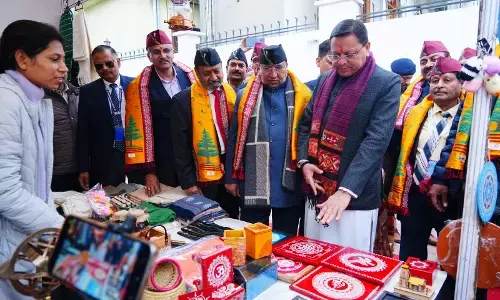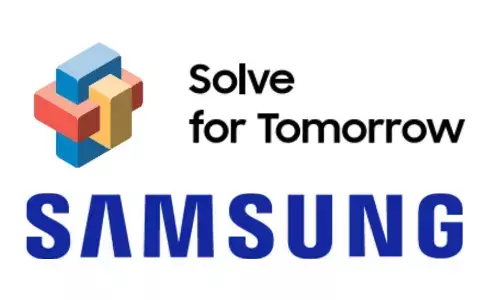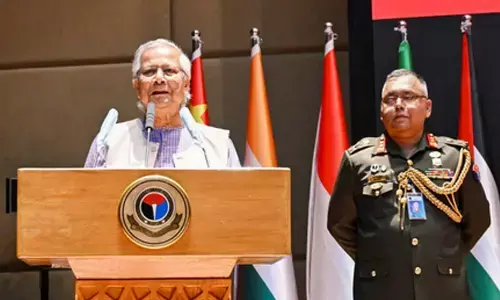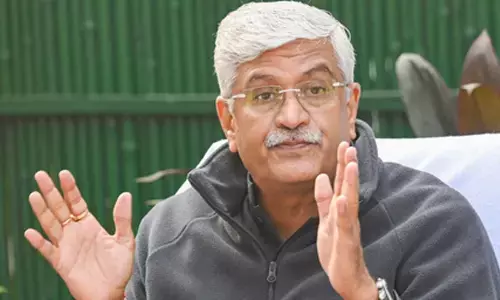Lockdown proved inflection point for e-commerce in India
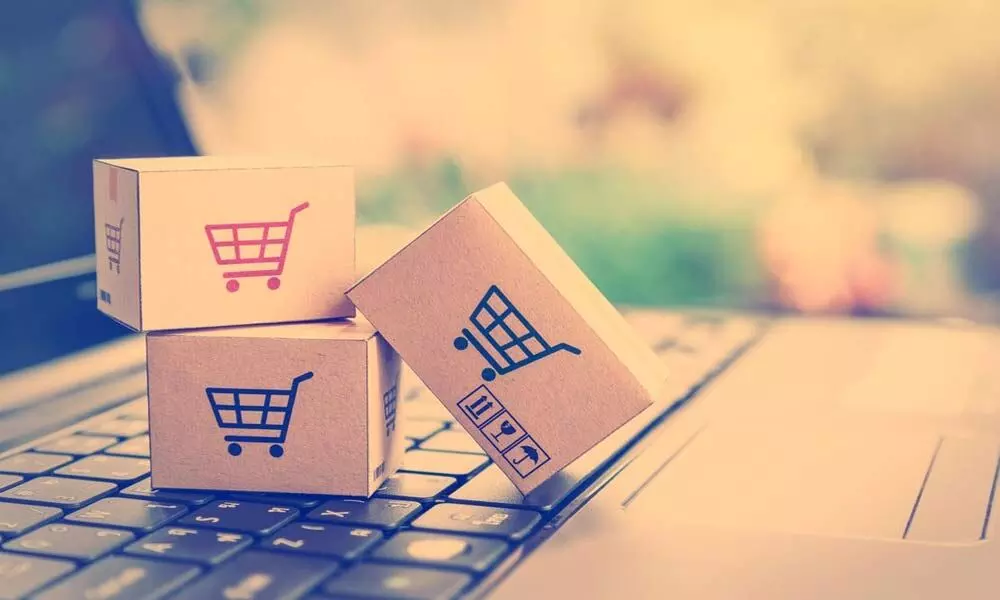
Lockdown proved inflection point for e-commerce in India
The pandemic-induced lockdown and movement curbs marked an inflection point for e-commerce in India, pushing demand to record highs, nudging new buyers as well as sellers onto digital platforms, and holding out the promise of lasting growth for players.
New Delhi: The pandemic-induced lockdown and movement curbs marked an inflection point for e-commerce in India, pushing demand to record highs, nudging new buyers as well as sellers onto digital platforms, and holding out the promise of lasting growth for players.
The Indian e-commerce market has been one of the biggest beneficiaries of the pandemic, as containment measures introduced millions to the convenience of online shopping, and prompted seasoned online shoppers to buy more.
Social distancing compulsions through the year, massive smartphone base and reliable broadband galvanised e-commerce uptake beyond metros, deep into smaller cities and towns, bringing an element of trust in online commerce.
The outbreak necessitated the use of new technology tools and non-contact formats to cater to unprecedented demand. Analysts said these shifts in consumer shopping traits are here to stay, post-pandemic.
The pandemic brought about a "structural shift" in shopping behaviour with more and more customers and businesses relying on e-commerce. Players like Amazon and Flipkart as well as industry watchers noted that the need for social distancing and prioritising safety during the pandemic led to millions of people turning to e-commerce platforms this past year, not only in metros but also in tier III regions and beyond.
From changes in category preferences to the emergence of new essentials , and from the adoption of native languages to a surge in new-age forms of payments -- the past year bore witness to an array of unique consumer trends.
Amazon also saw similar trends as thousands of neighbourhood Kirana stores and offline retailers also came onboard to leverage digital technology to reach customers' doorstep.
A Grofers spokesperson said that amongst all new users on its platform in the last one year, 64 per cent were first-time online grocery shoppers, while 20 per cent were totally new to e-commerce.
Flipkart witnessed new user growth of close to 50 per cent soon after the lockdown, with tier III regions and beyond registering the highest growth of 65 per cent during the 'Unlock' (July - September) phase last year.
To ensure convenience for first-time shoppers, Flipkart introduced new capabilities to handhold them through the purchase journey with the addition of a voice assistant and vernacular interfaces in multiple languages.
" customer retention by online platforms has improved as these platforms have emerged as one of the lifelines for consumers during COVID," observed Saurav Chachan, engagement manager at consulting firm RedSeer.
Notably, the demand for online goods and products mirrored the different facets of life under the lockdown and pandemic.
Demand spiked in categories such as groceries, home office essentials like laptops and headphones, furniture, consumer electronics products, health and fitness products, household products, personal grooming products, apparel, toys and books, according to e-tailers.
"As customer consumption patterns and habits evolved, over the last year, sellers have seen high demand in categories such as groceries, work from home and online schooling enablers like laptops, smart devices and headphones. We also saw significant demand for personal grooming products, wellness products, masks and sanitisers and fitness products..., an Amazon India spokesperson said.
The new normal of working and learning from home also fuelled demand for consumer electronic products.
Flipkart said laptops and desktops saw a 3X increase in demand in 2020, compared to pre-COVID levels.
The opportunities, however, came fraught with new challenges.
The nationwide lockdown brought transportation of goods and movement of personnel to a grinding halt. There were initial hiccups and e-commerce companies struggled to complete deliveries even as orders piled up.
During the first two phases of the lockdown, e-commerce companies were allowed to sell only essential items like grocery, healthcare and pharmaceutical products. In the following phases (starting May 4), the restrictions were gradually lifted.
But these digital platforms undertook a series of measures, including hiring thousands of delivery staff to meet the surge in orders.
RedSeer's Chachan noted that the complete ban on the sale of non-essential during the two months resulted in a low gross merchandise value for the online retailers apart from e-grocery players".
Moreover, players had to configure their systems to plan deliveries to customers in areas marked as "containment zones and red zones". A shortfall of delivery staff amid COVID prompted players to explore cross-industry tie ups to cater to their customers, Chachan said.
Snapdeal, for example, rallied resources to start shipping out essential items like food, grocery, medicines, masks and sanitiser that were allowed to be delivered.
"We devised safety protocols for safe deliveries, went out to sign up with local farmer mandis to start hyperlocal deliveries of essential items, to ensure we were able to meet demands of our users," the Snapdeal spokesperson said.
For players dealing in categories like fashion that were not in the essential categories list, the initial phases of lockdown meant zero business.
Myntra CEO Amar Nagaram said the lockdown situation was unprecedented, and businesses too bore the brunt of the shutdown initially.
The e-commerce space wasn't entirely immune to the catastrophe at least in the initial days as deliveries were a physical phenomenon, and the situation on the ground "wasn't welcoming", he recounted.
Myntra went back to the drawing board to chart out a fresh course to overcome this "temporary, yet a weighty situation".
"We associated with over 80 brands for procuring masks and made efforts to deliver them safely across the country in the early stages of the lockdown. In addition to this, we launched Myntra Studio, which focuses on fashion-related content on our platform to keep our audience engaged with us," Nagaram said.
The pandemic also marked a turning point for small and medium businesses, which swiftly adjusted to the new e-commerce reality.
Market watchers feel that many of the pandemic triggered shifts in the e-commerce space are irreversible and are likely to stick.
"Post the pandemic, faster delivery, zero shipping charges, ratings and review information and broader selection will be the key drivers of e-commerce growth," said Sachin Taparia, founder and chairman of LocalCircles.
For thousands of first-timers who learnt to navigate eCarts through virtual aisles last year, shopping online has quietly shifted from the realm of compulsion to being part of daily life, a comfortable, convenient way to buy what the heart desires, from the comfort and safety of home.








